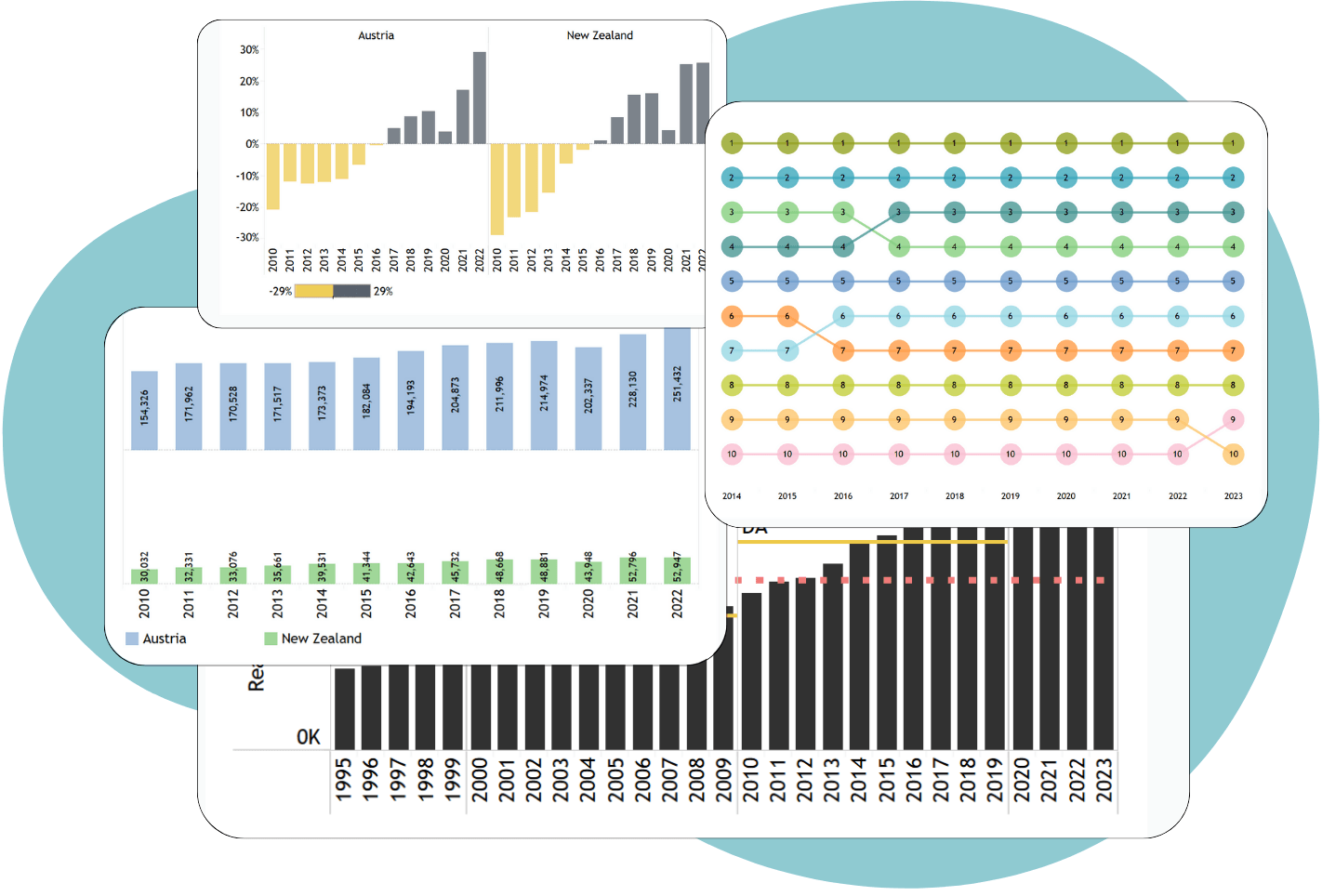Enter the Waikato Data Hub
Unlock Actionable Insights for Smarter Decisions

A Comparative Socio-Economic Profile: Waikato Region
230+ Dashboards | 10 Themes
- Assessment Scope:
Provides an evaluation of the Waikato region's performance in comparison to the national economy as well as other regions and territorial authorities. - Data Granularity:
Where available, the assessment includes data at the SA2 level. - Key Indicators:
Offers insights into critical indicators including population, land use, labour force, Māori economy, macroeconomic trends,
sector performance, productivity, business vibrancy, infrastructure, income, and social support. - Trend Analysis:
Analyses trends using data from the year 2000 onwards. - Update Schedule:
Last updated on 1 October 2025. The next update is scheduled for July 2026, coinciding with the release of the final Census data.
Waikato's Functional Economic Areas: A Data-Driven View
10 Dashboards
- Overview:
Explores Waikato’s Functional Economic Areas (FEAs) through a data-driven lens to understand the region’s socio-economic landscape. - Data Source:
Based on Stats NZ FUAs, refined by Formative Ltd, using 2018 Census travel-to-work data at the SA1 level. - Scope of Analysis:
Includes urban cores (5,000+ residents), commuting zones, secondary cores, satellite towns, and hinterlands to reveal socio-economic indicators
across the Waikato region. - Framework Purpose:
Provides an evidence-based, internationally aligned framework for urban planning and policy decisions.
A Comparative Socio-Economic Profile: NZ Economy
345+ Dashboards | 11 Themes
- Overview:
Evaluates New Zealand's performance in comparison with other small, advanced economies. - Definition of Small-Advanced Economies (SAE):
Countries with fewer than 15 million people and a per capita income greater than US$30,000 (Growth Lab, Harward University The Growth Lab) - Comparative Data:
Includes data from Switzerland, Belgium, the Netherlands, Norway, Ireland, Hong Kong, Denmark, Finland, Singapore, Sweden, and Austria. - Trend Analysis:
Most trends are analyzed using data since the year 2000. - Update Schedule:
Last updated on 1 October 2025, with the next update scheduled once the latest data for the assessed criteria become available.